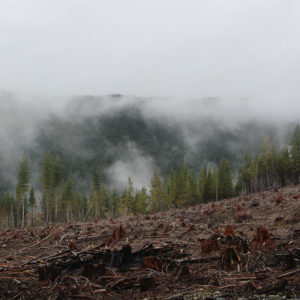Canadian Logging Industry Greenhouse Gas Emissions Equivalent to those from Oil Sands Operations
Unceded Algonquin Territory, Ottawa, ON – October 18, 2022
A paradigm-shifting report shows that net greenhouse gas (GHG) emissions from industrial logging in Canada are on par with those of Canada’s oil sands operations. According to Lost in the Woods: Canada’s Hidden Logging Emissions are Equivalent to those from Oil Sands Operations, a Nature Canada and Natural Resources Defense Council report released today, logging is one of Canada’s highest GHG-emitting sectors.
“Logging is often, erroneously, portrayed by governments and industry as a carbon-neutral sector,” said Graham Saul, Executive Director of Nature Canada. “This report clearly shows that claim to be false. The reality is that logging is a high-emissions sector whose climate impacts are being ignored.”
The report calculates, for the first time, the net GHG emissions associated with logging in Canada using published and unpublished 2020 government data. It shows that, even using the government’s own numbers, which are likely to be conservative, the net GHG emissions from logging in 2020 were 75 megatonnes of carbon dioxide equivalent (Mt CO2e) – roughly equal to emissions from Canada’s oil sands operations.
“Canada and the world can’t afford to continue ignoring the logging industry’s devastating climate toll,” said Anthony Swift, Director of the Natural Resources Defense Council’s Canada Project. “Lost in the Woods starkly illustrates that Canada can’t meet its climate targets unless it addresses logging emissions alongside those of the fossil fuel sectors. Canada’s global standing on forests and climate depends on it.”
The Government of Canada does not transparently report emissions from the logging industry in its annual national GHG inventory. Nor does the government’s 2030 Emissions Reduction Plan include a strategy for reducing logging emissions, leaving a significant hole in Canada’s plan to address its climate impact. While Canada has committed to cut GHG emissions by at least 40% from 2005 levels by 2030, meeting this target will require the government to integrate the logging industry, as one of Canada’s highest-emitting sectors, into this strategy, and take action to reduce logging’s emissions.
A copy of both the report and the accompanying technical document are attached and can also be accessed at naturecanada.ca/lostinthewoods.
Michael Polanyi and Jennifer Skene are available for interviews or a technical briefing. Graham Saul is also available for interviews.
For more information
Michael Polanyi, Nature Canada
343.553.6060
mpolanyi@naturecanada.ca
Margie Kelly, Natural Resources Defense Council (NRDC)
541.222.9699
mkelly@nrdc.org



